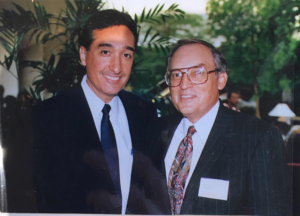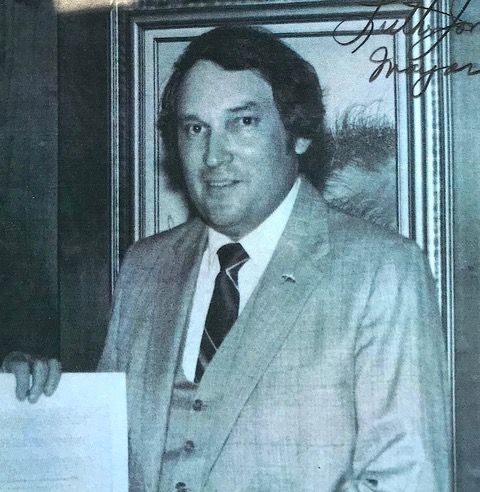By Santos S. Villarreal
Edited by Dr. Ricardo Romo
Santos S. Villarreal, born and raised in San Antonio’s Westside, graduated from Lanier High School in 1955. Here is his account of working for Urban Renewal and HUD.
The Santos S. Villarreal Memories
“I graduated from St. Mary’s (BBA) in 1962. This was a time when much of the business sector was shut out to minority graduates. We were all having trouble finding jobs within our business majors. We accepted whatever came our way. In my case it was social work and I loved my job I applied for any job with the City and Urban Renewal called me about 1 year after I graduated. The person that interviewed me was Minnie Garcia and she liked my Westside roots. I came in at the tail end of their first project which was around “El Mercado” and the boundaries were Houston St., Laredo St., Guadalupe St., and Pecos St. I was hired as a Residential Relocation Counselor and I helped families and individuals relocate into standard, safe and sanitary housing, and obtain any other benefits they w needed.
In 1965 I asked Winston Martin, the Agency Head, for an opportunity to move to the Real Estate Department after seeing that they were staffing up for Hemisfair. Martin told me to tell the individual doing the hiring to put me on his staff. I was hired as a Real Estate Negotiator. I was the only Spanish surname person for the 3 years I stayed in the Real Estate Department.
 I left in 1968 when Hemisfair opened and three Hispanics were hired. Most of the employees were seasoned real estate individuals and without exception all were willing to help me learn the business. I enrolled in Real Estate School and in two years I had a Broker’s License. I was still in my 20’s when I started. I stayed another 3 years running a Neighborhood Facility called HELP HOUSE (Housing, Education, Livelihood, Progress) on the corner of Martin and Leona.
I left in 1968 when Hemisfair opened and three Hispanics were hired. Most of the employees were seasoned real estate individuals and without exception all were willing to help me learn the business. I enrolled in Real Estate School and in two years I had a Broker’s License. I was still in my 20’s when I started. I stayed another 3 years running a Neighborhood Facility called HELP HOUSE (Housing, Education, Livelihood, Progress) on the corner of Martin and Leona.
We were also very involved with another program funded by HUD and that was Model Cities. It was an enormous undertaking in the Westside and the reason for its success was the outstanding Citizen Participation Committees that were established to identify the many needs in the area. I attended many meetings with the group and the members were known to speak up.
I knew both of the Model Cities Directors. The first one was Alfred Rodriguez whom I met at St. Mary’s in 1955. He was our Student Council President that year and a very intelligent and eloquent person. When he left Model Cities, another friend by the name of Roy Montez replaced him. Roy came from our office at Urban Renewal with a lot of experience as a planner. He was also a good fit because of his demeanor.
When I joined HUD in 1971 I had worked eight years with the City of San Antonio Urban Renewal Agency. The Agency was 100 % HUD funded so I qualified for jobs at HUD. I was hired in HUD’s Office of Fair Housing and Equal Opportunity Division. This was HUD’s Civil Rights Office and we enforced, implemented, and promoted the Fair Housing Law or Title VIII of the Civil Rights Act of 1968. In addition, we enforced other Civil Rights legislation passed as a part of the Civil Rights Laws passed in 1964 under the Johnson Administration.
I also went to Federal Investigators School, but in my career I did very few investigations. Most investigators were located in our office in Ft. Worth and I was assigned to an Area Office here in San Antonio. Our role was to
review all applications and monitor all the programs that we provide federal funds.
I worked 26 years doing Civil Rights work and 18 years as the Division Director. We would get involved in many areas such as contracting, employment complaints and investigations. What we strived for was changing behavior when it was needed.
In the mid 1970s received a notice from Washington that they wanted all of the field offices to make a concerted effort to talk to newspaper companies and try to get them to provide us free space to include a Fair Housing Notice that puts the readers on notice that the Newspaper would not accept any ad that discriminates against anyone based on the protected classes.
As I traveled through the 57 Counties we covered, I would make it a point to inquire as to whether the community had a daily or weekly paper. If they did, I would visit and drop off a sample of what we were requesting from them. There was no mandatory requirement that they do so.
I was able to get an appointment with the owners of the San Antonio Express and News and after a discussion
as to why they should include the Fair Housing Notice they agreed to include it in every newspaper they owned. They owned many within the State, so I hit the jackpot. This notice has evolved throughout the years with the addition of protected classes. This accomplishment has stood the test of time because I did this in the 1970’s.
Hopefully, this last section has been of benefit to individuals that have experienced discrimination when they looked for housing and this notice informed them what their rights were and who to call. I will forever be thankful to all newspapers who participate in this endeavor.”









